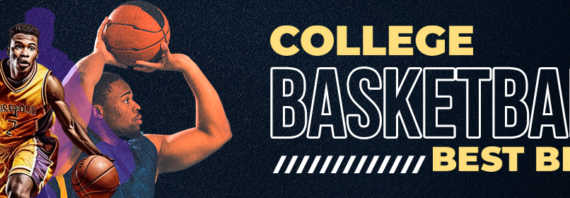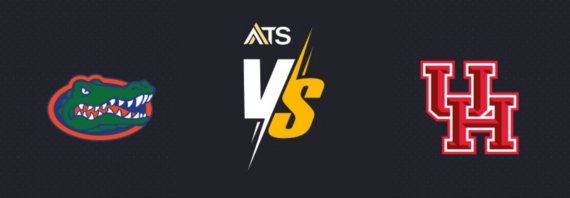College basketball is highly unpredictable these days, with the current climate of the sport leading to the potential for massive NCAA Tournament upsets on a regular basis. While the list of teams with a realistic chance to make the national championship game is a short one, there is still the potential to find value in the college basketball futures markets the season to come. Here, we look at the current March Madness odds and look at the teams that could win it all.
NCAA March Madness Odds To Win The Championship
| Team |  |  |  |  |  |
|---|---|---|---|---|---|
PUR | +1000 | +1000 | +1000 | +900 | +1000 |
DUKE | +1100 | +1300 | +1000 | +1100 | +1300 |
HOU | +1100 | +1100 | +1000 | +1000 | +1000 |
FL | +1600 | +1600 | +1600 | +1600 | +1700 |
MICH | +1700 | +1500 | +2000 | +1500 | +1700 |
STJOHN | +1700 | +1600 | +1600 | +1700 | |
UK | +1800 | +1800 | +1800 | +1800 | +1700 |
BYU | +2000 | +1600 | +2500 | +1700 | +2000 |
TXTECH | +2000 | +2500 | +3000 | +2500 | +2000 |
ARK | +2200 | +2500 | +2500 | +2200 | +3000 |
KAN | +2200 | +2000 | +2000 | +2500 | +1600 |
LOU | +2200 | +2200 | +2500 | +2200 | +2000 |
TENN | +2800 | +3500 | +5000 | +2800 | +4000 |
ALA | +3000 | +3000 | +3500 | +3000 | +3500 |
ARZ | +3000 | +2500 | +2500 | +2500 | +3500 |
AUBRN | +3000 | +3000 | +4000 | +3000 | +2500 |
MST | +4000 | +3000 | +3500 | +3500 | +4000 |
NCAR | +4000 | +4000 | +3000 | +4500 | +4000 |
UCLA | +4000 | +4000 | +4000 | +4000 | +3500 |
IOWAST | +4500 | +4000 | +8000 | +4500 | +3500 |
At the time of this writing, here are odds to win the national championship in college basketball in 2025 heading into the NCAA Tournament.
| Team | Odds |
|---|---|
| Duke | +300 |
| Florida | +425 |
| Auburn | +500 |
| Houston | +700 |
| Alabama | +1600 |
| Tennessee | +1800 |
| Michigan State | +2500 |
| St. John’s | +2500 |
| Texas Tech | +2500 |
| Gonzaga | +3500 |
| Iowa State | +3500 |
| Arizona | +4000 |
| Illinois | +5000 |
| Kentucky | +5000 |
| Maryland | +5000 |
| Wisconsin | +5000 |
| Kansas | +6500 |
| BYU | +8000 |
| Clemson | +8000 |
| Missouri | +8000 |
| Purdue | +8000 |
| Texas A&M | +8000 |
| Louisville | +10000 |
| Ole Miss | +10000 |
| Saint Mary’s | +10000 |
| UConn | +12500 |
| Michigan | +12500 |
| UCLA | +12500 |
| Creighton | +15000 |
| Marquette | +15000 |
| Baylor | +20000 |
| Mississippi State | +20000 |
| VCU | +20000 |
| Oregon | +25000 |
| North Carolina | +30000 |
| Arkansas | +50000 |
| Colorado State | +50000 |
| Memphis | +50000 |
| San Diego State | +50000 |
| Vanderbilt | +50000 |
| Akron | +75000 |
| Drake | +75000 |
| Georgia | +75000 |
| Grand Canyon | +75000 |
| Oklahoma | +75000 |
| Texas | +75000 |
| UC San Diego | +75000 |
| Bryant | +100000 |
| Liberty | +100000 |
| Montana | +100000 |
| Omaha | +100000 |
| New Mexico | +100000 |
| Robert Morris | +100000 |
| St. Francis | +100000 |
| SIU Edwardsville | +100000 |
| Troy | +100000 |
| UNC Wilmington | +100000 |
| Utah State | +100000 |
| Xavier | +100000 |
| Alabama State | +150000 |
| American | +150000 |
| High Point | +150000 |
| Lipscomb | +150000 |
| McNeese | +150000 |
| Mount St. Mary’s | +150000 |
| Norfolk State | +150000 |
| Wofford | +150000 |
| Yale | +150000 |

& Sweepstakes Casino

& Sweepstakes Casino
College Basketball National Championship Handicapping
The Favorites To Win the Championship
During the 2024-25 college basketball season, there are a few clearly defined favorites to win the national championship. Chief among those teams are the Auburn Tigers, Florida Gators, and Duke Blue Devils. Auburn has had one of the best offenses in the country all season long and will be a tough out for anyone in March, with recent experience making deep runs in this tournament under Bruce Pearl. But they might not even be the best SEC team in the tournament this year thanks to how well Florida has been playing.
As for Duke, Cooper Flagg has been as advertised so far this year for the Blue Devils. Flagg has yet to play in an NCAA Tournament, but college basketball betting picks have regularly seen Duke selected in national title futures markets thanks to his dominant play this year. It will be interesting to see if Duke can keep up their high level of play during the tournament and if they overcome the ankle injury sustained by Flagg in the ACC tournament.
Best of the Rest
Beyond the two title favorites, there are several teams with a chance to win the national title that rank right behind the teams mentioned above. Squads like Iowa State and Alabama are in that second tier of schools hoping to work their way up to the top of the rankings and into the national title picture. These teams have shown major strengths on both ends of the floor even if they are not in the top three in this year’s March Madness futures markets.
For these teams, a national championship is certainly a possibility, but it will take their best basketball for them to get the job done. When considering teams in this middle group in the March Madness futures markets, should evaluate what their NCAA Tournament path might look like and evaluate their strengths and weaknesses against each team they could potentially face in the bracket. But we have seen plenty of teams that aren’t favorites win this tournament in the past and these teams could certainly be worth backing in the big dance.
Possible Longshots
For those looking for a longshot bet to win the national title, a team like UConn could be worth considering. The Huskies aren’t as dominant as they were over their last two seasons, which ended with national championships, but you clearly can’t count out Dan Hurley in the month of March either. Bettors shouldn’t go into any longshot bet expecting it to win easily, but rather to give themselves a chance to win and uncover value and hedging opportunities down the road.
When looking for longshot bets to win the NCAA Tournament, the goal is to simply find teams that you perceive to have a better chance to win the title than the odds would suggest. There are many ways to come to such conclusions, with each bettor having their own unique style of handicapping teams in the futures markets. But the overall goal is to identify teams who can outperform expectations in the neutral site tournament.
Our March Madness Championship Pick
Right now, our pick to win the NCAA Tournament next season is the Florida Gators. With UConn taking a step back after losing so much talent, a team with a great offense like that of Florida could be primed to take over as the top team in college basketball. Look for Florida to get the job done and to cut down the nets at the end of the Final Four.




